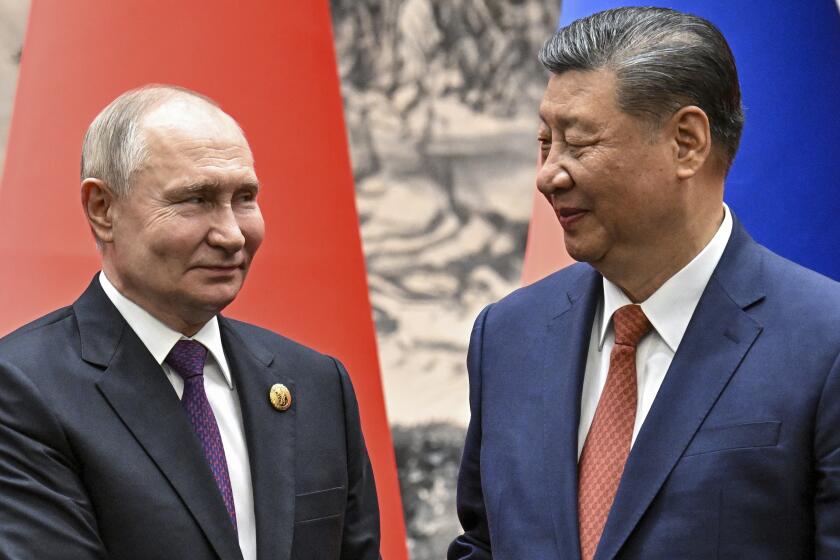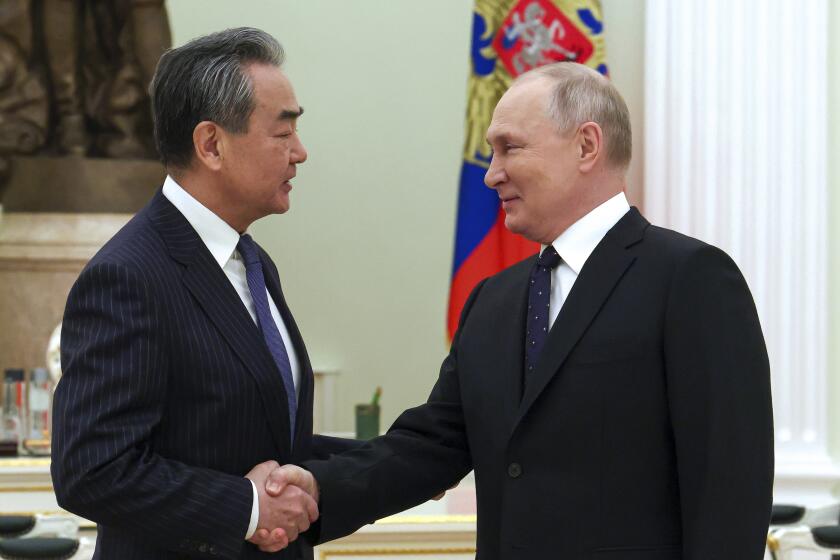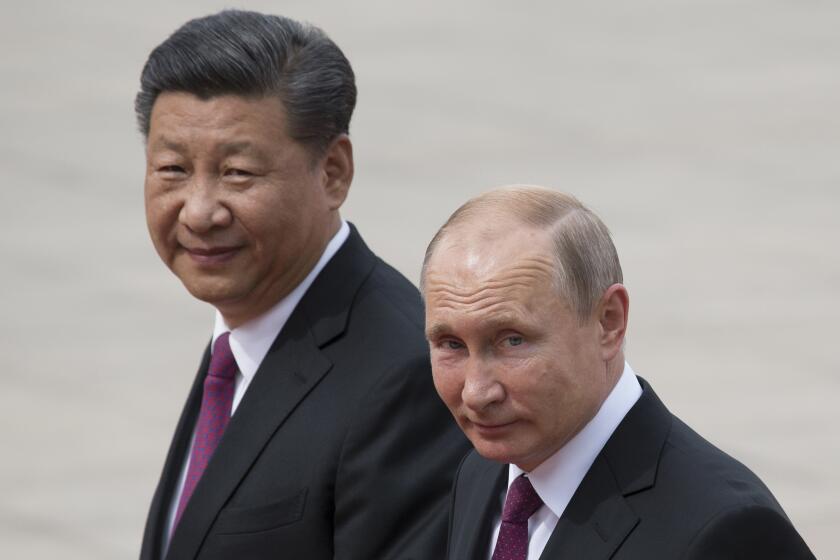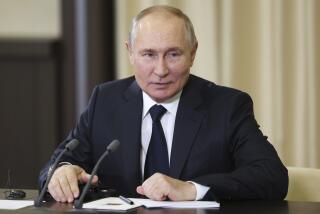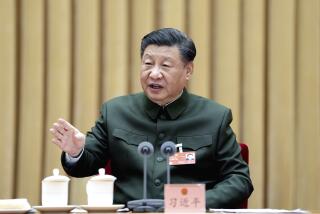China has expanded its nuclear force and strengthened ties to Russia, Pentagon says

- Share via
WASHINGTON — China is expanding its nuclear force, has increased military pressure against Taiwan and has strengthened its ties with Russia over the past year, according to a Pentagon report Wednesday that details actions accelerating key areas of conflict with the United States.
The report, however, also notes that a recent rash of corruption allegations within China’s powerful Central Military Commission, which oversees the People’s Liberation Army, is hurting Beijing’s military growth and could slow its campaign to modernize.
The impact, said a senior defense official, is a bit of a mixed bag because while there has been progress in some programs, China has slid back in others.
The official, who spoke on condition of anonymity to describe the U.S. assessment, warned that Beijing is working toward developing a more diverse and technologically sophisticated nuclear force. While the expected number of nuclear warheads has maintained consistent growth, China is broadening its targeting abilities.
Beijing is going to be able to go after more and different types of targets, do greater damage and have more options for multiple rounds of counterstrikes, the official said. The U.S. is urging China to be more transparent about its nuclear program, while also warning that America will defend its allies and take appropriate steps in response.
As Russia’s Vladimir Putin meets with China’s Xi Jinping in Beijing, the pomp and pronouncements are meant to signal a unified alternative to the West.
According to the report, an annual U.S. assessment of China’s military power that is required by Congress, China had more than 600 operational nuclear warheads as of May, and the U.S. expects it will have more than 1,000 by 2030.
The Biden administration has worked to maintain a balance with China, building up the U.S. military presence in the Asia-Pacific region to be ready to counter Beijing while also encouraging increased communications between the two countries at the diplomatic and military levels.
That uptick in talks has coincided with a decrease in coercive and risky intercepts of U.S. aircraft since late 2023, compared with the previous two years. China still, however, does what the U.S. military considers “unsafe” flights near American and allied forces in the region.
The Pentagon’s national defense strategy is built around China being the greatest security challenge for the U.S., and the threat from Beijing influences how the U.S. military is equipped and organized for the future.
The corruption within the People’s Liberation Army has resulted in at least 15 high-ranking officials being ousted in a major shakeup of China’s defense establishment.
A series of Russia-China meetings are being closely watched for signs that Beijing might offer the Kremlin stronger support for its war in Ukraine.
“This wave of corruption touches every service in the PLA, and it may have shaken Beijing’s confidence,” the report said.
In June, China announced that former Defense Minister Li Shangfu and his predecessor, Wei Fenghe, were expelled from the ruling Communist Party and accused of corruption. Last month, another senior official, Miao Hua, was suspended and put under investigation, according to China’s Defense Ministry.
The U.S. report points to a persistent increased military presence by China around Taiwan, the self-governing island that China claims as its own. It said China’s navy has been in the region more and that there have been increased crossings into the island’s air defense identification zone and major military exercises in the area.
Just last week, a large deployment of Chinese navy and coast guard vessels in the waters around Taiwan triggered alarm as Taiwanese officials said it looked like China was simulating a blockade. Officials said as many as 90 ships involved in what Taiwan described as an attempt to assert that the waters belong to China.
Taiwan split from communist China in 1949 and has rejected Beijing’s demands that it accept unification. China says it will do so by force if necessary, and leaders have said they want to be ready to do so by 2027.
Russian President Vladimir Putin, the junior partner in the ‘no limits’ relationship with China’s Xi Jinping, visits Beijing. What does each man want?
The United States is obligated under domestic law to help defend Taiwan and give it weapons and technology to deter invasion.
The island democracy has been the chief source of tension between Washington and Beijing for decades and is widely seen as the most likely trigger for a potentially catastrophic U.S.-China war.
More broadly, the report concluded that the PLA continued its drive to develop greater military capabilities but “made uneven progress toward its 2027” milestone for modernization.
One area of expansion, the report said, is with unmanned aerial systems, which officials said are “quickly approaching U.S. standards.”
Regarding Russia, the report said China has supported Russia’s war against Ukraine and sold Russia dual-use items that Moscow’s military industry relies on. Dual use items can be used for both civilian and military purposes.
Baldor writes for the Associated Press.
More to Read
Sign up for Essential California
The most important California stories and recommendations in your inbox every morning.
You may occasionally receive promotional content from the Los Angeles Times.
